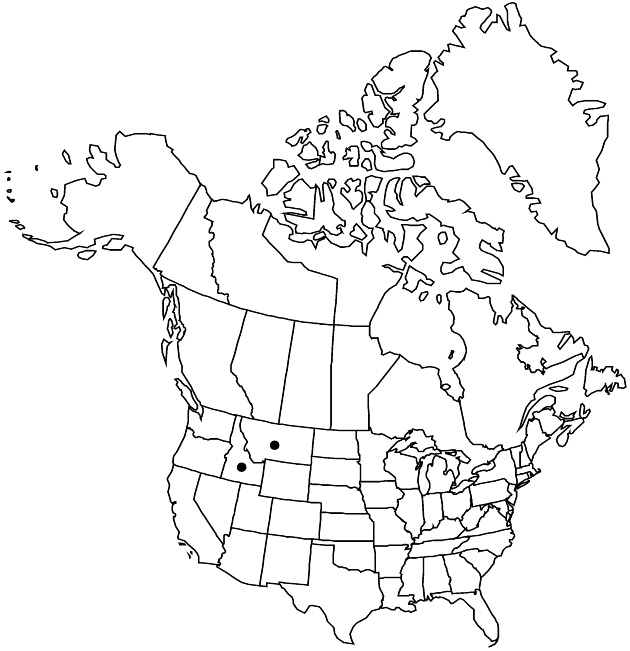Grindelia howellii
Ann. Missouri Bot. Gard. 21: 549, fig. 30. 1934.
Perennials, (25–) 60–90+ cm. Stems erect, stramineous to redbrown, stipitate-glandular (at least distally). Cauline leaf-blades spatulate or oblong to oblanceolate or lanceolate, 25–60 (–90) mm, lengths 3–5 (–7) times widths, bases cuneate to ± clasping, margins entire or serrate to denticulate (teeth apiculate), apices obtuse to acute, faces usually finely stipitate-glandular, sometimes glabrous (or scabridulous near margins) and gland-dotted. Heads in open to crowded, corymbiform to paniculiform arrays. Involucres broadly urceolate to globose, 8–15 × 12–20 (–30) mm. Phyllaries in 6–9 series, spreading to appressed, linear or linear-attenuate to lance-linear, apices mostly looped to hooked (inner sometimes recurved to straight), ± terete, moderately to strongly resinous. Ray-florets 20–30+; laminae 8–12 mm. Cypselae whitish to stramineous, 4–5.5 mm, apices ± coronate, faces striate or furrowed; pappi of 2 straight to curled, usually smooth, sometimes barbellulate, subulate scales 2.5–4+ mm, shorter than disc corollas.
Phenology: Flowering Jul–Sep.
Habitat: Disturbed sites, grasslands, forest openings
Elevation: 900–1300 m
Discussion
Of conservation concern.
But for the usually stipitate-glandular indument of the stems and leaves, plants called Grindelia howellii are very much like plants that have been called G. nana forma brownii Steyermark, G. nana forma longisquama Steyermark, and G. paysonorum H. St. John [= G. nana var. paysonorum (H. St. John) Steyermark], all typified by specimens included here in G. hirsutula. In some plants of G. howellii, the glands on the leaves range from stipitate to ± embedded (e.g., Pierce 1146, ID). Taxonomic rank for plants that have been called G. howellii should be reconsidered.
Selected References
None.
